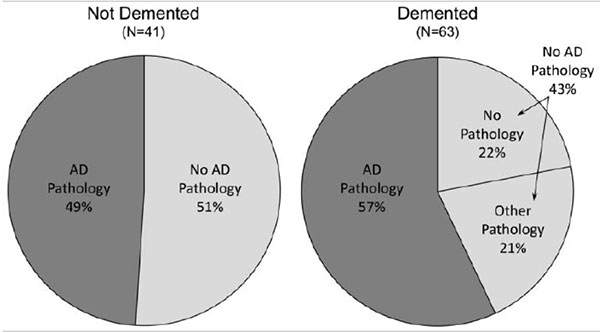The Relationship between Alzheimer’s, Dementia and the Aging Brain
New research reveals the best way to survive from 75 to 90 years old: eat, drink, be merry, and exercise. Those who made it to 75, benefited from
- Consuming wine rather than abstinence
- Consuming coffee rather than abstinence.
- Socialization – a good excuse to have wine or coffee ????
- Exercise – as little as 30 minutes a day of walking.
- Those who weighed more than average lived longer
Forget dieting, abstinence, avoiding Starbucks, social isolation, and the no-pain-no-gain school of exercise.
Lessons Learned from the Healthy 90+
 These observations come from the world’s best data on aging, the Leisure World Aging Cohort, which started with 14,000 people in 1981. The study still follows those participants who have survived to live over 90 and is now titled the 90+ Study. The principal researchers — Claudia Kawas, MD and Maria Corrada, MD — have published many studies that challenge many of the conventional assumptions about aging. The 90+ Study has better quality data because every participant agreed to an autopsy.
These observations come from the world’s best data on aging, the Leisure World Aging Cohort, which started with 14,000 people in 1981. The study still follows those participants who have survived to live over 90 and is now titled the 90+ Study. The principal researchers — Claudia Kawas, MD and Maria Corrada, MD — have published many studies that challenge many of the conventional assumptions about aging. The 90+ Study has better quality data because every participant agreed to an autopsy.
While you might consider an autopsy almost medieval in this age sophisticated equipment, but they reveal that the error rate between pre-mortem and post-mortem diagnoses runs around 20%. A 20% error rate is horrible. These are not minor discrepancies. In hospital studies, these discrepancies are diagnoses like undetected heart attacks or infections.
The autopsy rate for those who die in hospitals is 7%; for those who die at home or hospice, it is effectively 0%. The autopsy rate in the 90+ study is 90%. This is the Gold Standard. Until we have genetic post-mortem diagnosis, it doesn’t get any better than this.
Is Alzheimer’s Really the Culprit?
The autopsies in the 90+ Study demonstrate that our conclusions about dementia — that it is mostly Alzheimer’s Disease (AD) — is wrong. About half the participants over age 90 that don’t have dementia have the brain changes of Alzheimer’s — protein scars made from tau and beta amyloid — and they may remain functional, some even driving, dancing, and dating. Among those who have dementia, slightly less than half (47%) have AD pathology.
People over the age of 90 with the AP0E2 gene — a marker for Alzheimer’s, were less likely to have clinical dementia, even though they were more likely to have Alzheimer’s pathology in their brain.
In other words, the major focus on dementia has been Alzheimer’s disease, and Alzheimer’s disease is not the cause of dementia in a majority of patients. Below is a graphical representation:

Fully half of those over the age of 90 who remain functional had the typical changes of Alzheimer’s in their brains. The “Other Pathology” in the right pie chart is microinfarct dementia, a product of vascular inflammation.
Dementia is Big Business
Research spending changes followed this change in scientific evidence. 20 years ago, 71% of available federal funding was on Alzheimer’s related research. More recently, NIH spending on Alzheimer’s related research was down to 46% of available funds.
In the public arena, however, the word “Alzheimer’s” dominates charitable giving. The most recent total on the Charity Navigator website was roughly $400 million per year. There were 212 listed charities, but only six that qualified for ratings. The next-largest related category — “dementia” — had 63 charities, but none that qualified for ratings. Among the Alzheimer’s charities, the largest, the Alzheimer’s Association, has $328 million in assets, and spends 90% of its money on programs. It, too, is shifting funds to projects that underlie many forms of dementia.
In this era of ersatz Facebook pages, there is also the Alzheimer’s Research and Prevention Foundation of Arizona. In Charity Navigator, it lists income of $664,000, and the salary of its president, Dharma Singh Khalsa, as $300,000. With hundreds of millions of dollars floating around, there are many questionable “solutions” bandied about in the press. A doctor Bredesen from UCLA published a “successful” study with 10 people, using a complicated regimen of lifestyle changes, while neglecting to mention he was the scientific officer for the company publishing the software to monitor the lifestyle.
Turmeric Tip for Brain Aging
A supplement company financed a “successful” study of 40 patients using a highly absorbable, unbelievably expensive, form of turmeric. However, turmeric also absorbed efficiently when taken with a fatty meal, which is defined as 5g of fat. Or for those of you taking several grams of fish oil, take your turmeric along with it.
A Simple Prescription to Avoid Alzheimer’s
The current wisdom to prevent Alzheimer’s disease is to
- Exercise 30 minutes a day
- Eat a Mediterranean diet (including anti-inflammatory foods)
- Get a good night’s sleep (make sure you don’t have sleep apnea)
- Keep learning (but avoid brain training games),
- Keep socializing.
- And have some wine and coffee and celebrate life!
Written by James Edward Katz, M.D.

